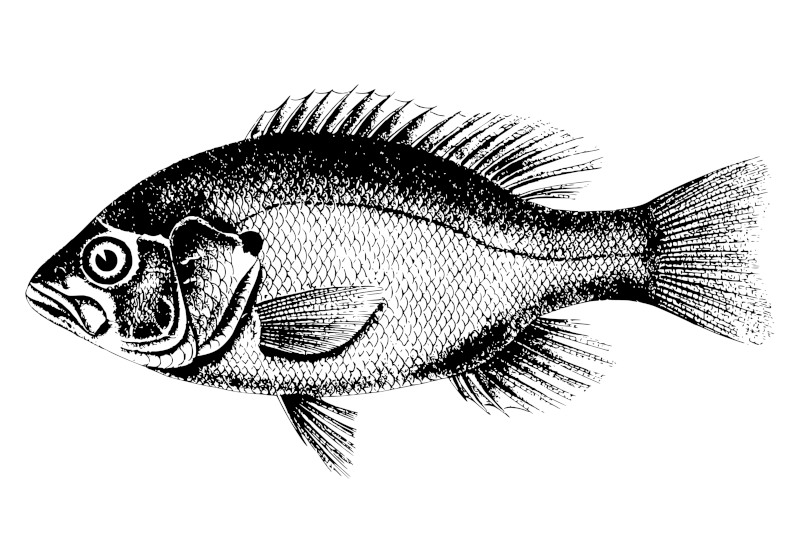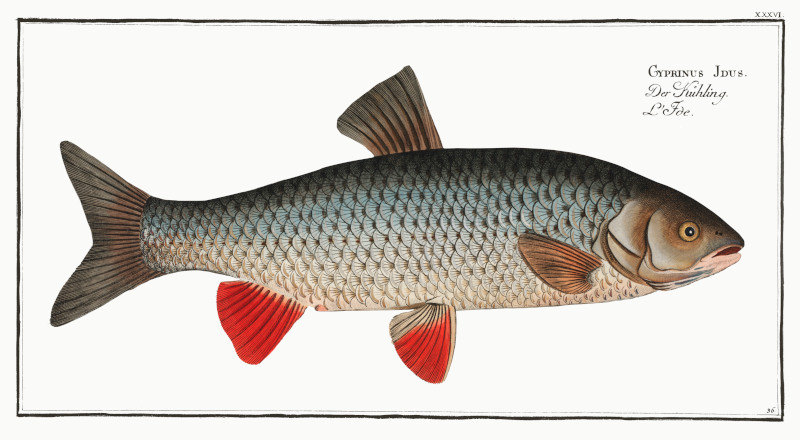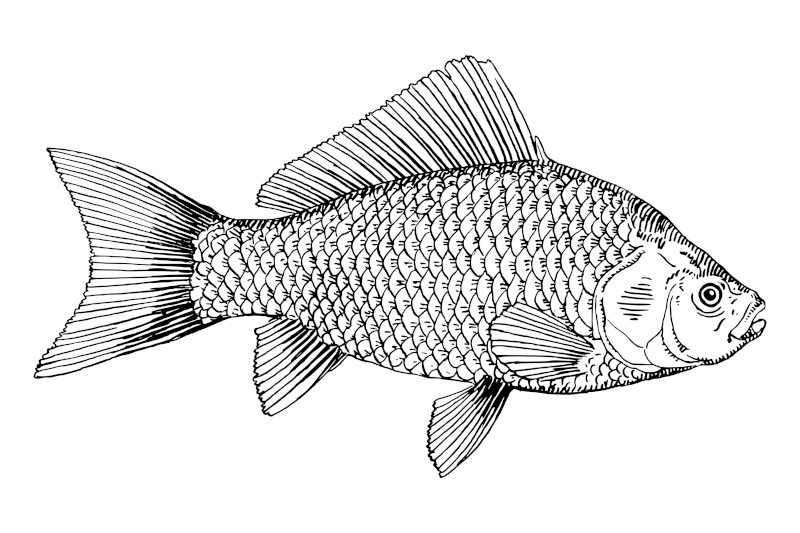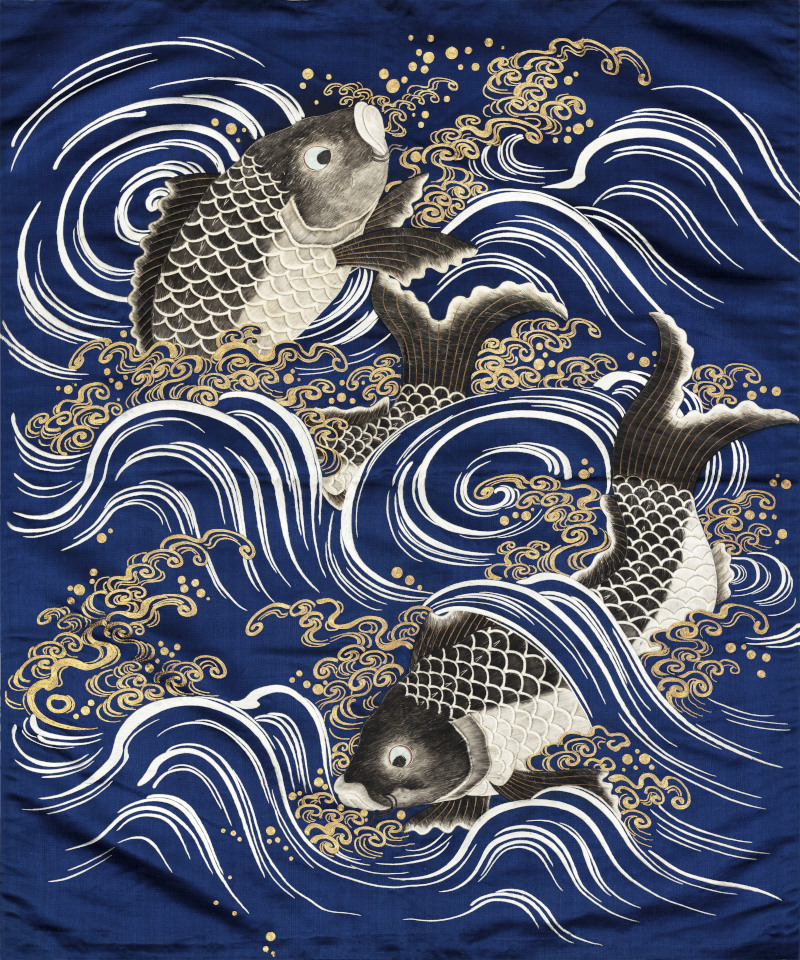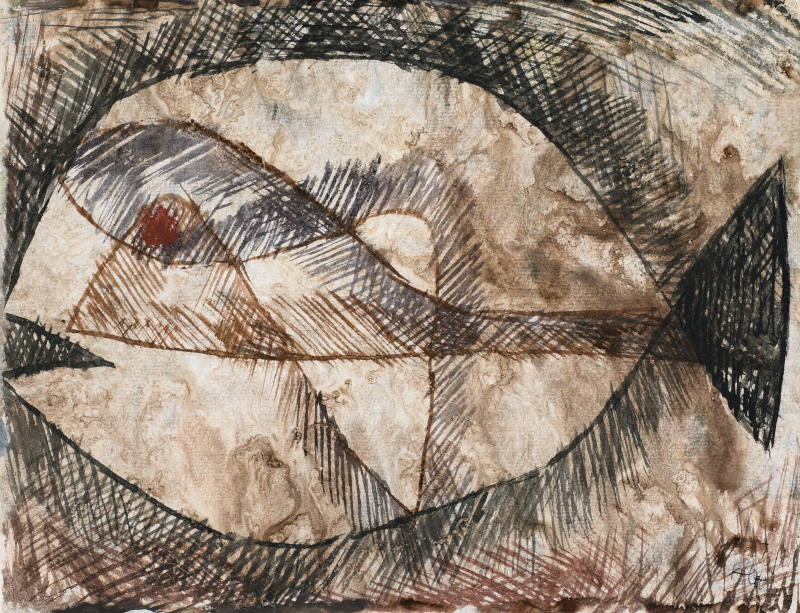Fish drawings and paintings have been popular additions to the art world for centuries, and the wide variety of fish species has brought many different opportunities to artists, sculptors, painters and illustrators over the years.
Introduction to Fish Drawings
Fish art over the centuries has helped to connect humanity with the rivers and seas, which remains the least well known and most inaccessible part of our planet. The beauty of these creatures has also brought considerable aesthetic value to art, and many fish hold symbolic values that artists can also easily make use of in their work. Drawing techniques can offer great precision when covering mammals and fish, and so many artists would have this preference for the fish genre.
In more recent times, modern art has brought new ideas into the fold. Abstract interpretations have brought the simplest of forms to life, making use of our existing knowledge of these beautiful creatures, where as in previous centuries it was more about educating the public. The art of drawing remains a key element of art itself, and a fundamental skill that most artists need to master early on in their careers.
List of Fish Drawings and Paintings
We have listed below a fine selection of fish drawings and paintings from the realms of art history, with a particular focus on fish art from the past two centuries. It is in this more recent period that accuracy has risen considerably, allowing art and education to combine together. This genre has evolved in a similar manner to butterfly and bird drawings, where individual species have been recorded through precise artistic measures, before later artists have chosen instead to focus purely on each one's aesthetic qualities.
We have attempted to make the list as comprehensive as possible, taking in many different artistic styles and techniques, including illustration, watercolor and oil paintings, as well as ranging in content from small river fish up to larger sea-based creatures. The ways in which the artists have interpreted their different qualities also provides an excellent survey of fish art from across the ages. Further beneath, you will find further discussion over a range of topics related to fish drawing, including how the genre has evolved since ancient times.
Common and Golden Carp by Ohara Koson
Ohara Koson displays within this work the beauty of Japanese art and the unique manner in which they depicted fish within bright tones and a tranquil atmosphere. Perspective and composition was formed differently in Japanese art, as compared to western art, and many of these ideas within woodblock printing was later taken on by European artists once they were exposed to these alternative artistic ideas. The artist would have specifically chosen these fish based on their complementary colors, with carp being regularly featured within Japanese art.
 Common and Golden Carp by Ohara Koson
Common and Golden Carp by Ohara Koson
Six Carp Swimming beneath Wisteria by Tsukioka Yoshitoshi
Tsukioka Yoshitoshi combines nature with fish, with blossoming branches leaning in from one side of the composition, whilst carp playfully move around a small pond. The artist signs the piece vertically in the corner, just as with much Japanese art, and the artist makes use of a variety of tones across his six carps. Japanese artists took on fish art more than any other culture, and continue to be the first point of reference for modern fish artists looking for inspiration.
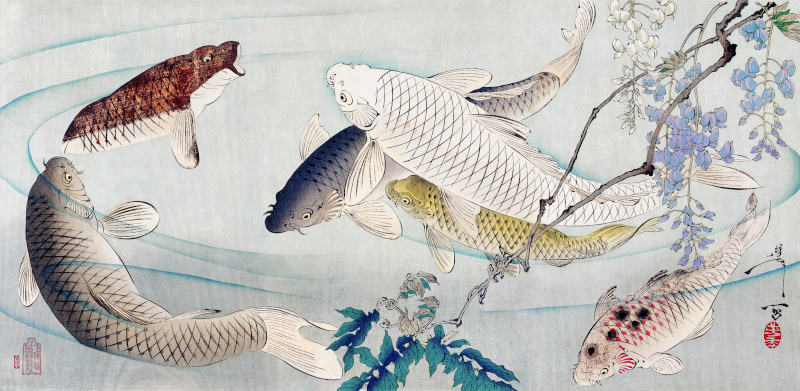 Six Carp Swimming beneath Wisteria by Tsukioka Yoshitoshi
Six Carp Swimming beneath Wisteria by Tsukioka Yoshitoshi
Carp by Marcus Elieser Bloch
This sketch of a carp is precise in its detail, and presumably the artist would have been highly familiar with the fish prior to completing this artwork, or had access to one from which to make a copy. The beautiful aspect of this piece is in the natural gradient of color which stretches across the surface of the fish, as well as the red tint to its lower section.
Fish Illustration
This accurate illustration of a fish is reduced to black lines, allowing us to dissect each and every section of the fish. It is likely that this drawing was completed in the 18th or 19th century, at which point precision was a key aspect to fish art. More recently, expressive styles have taken over, and abstract forms have started to appear since around the early 20th century.
Vintage Fish Drawing
This additional vintage drawing captures a black and white fish in side profile, just as one might observe within a fish market. Art such as this helps us to learn about the physical structure of each fish species, but fails to get across their character or behavior. Many still find a beauty in this style of art, where each and every detail can be appreciated and marvelled at.
Two Veil Goldfish by Ohara Koson
This charming Japanese fish painting focuses on color to provide a bright image of new goldfish, who are joined by some green weeds that provide a balance to the piece. Setting a natural habitat was common for fish art, just as artists would often include birds perched on branches in order to connect with their natural surroundings.
 Two Veil Goldfish by Ohara Koson
Two Veil Goldfish by Ohara Koson
Carp in Waves
This elaborate piece is remarkable for the way in which its creator uses line and curve to produce the feeling of movement and energy, within a two dimensional static format of drawing and painting. Some may be reminded by the later work of Blood of Fish, by Gustav Klimt, which is an illustration that uses curves to create a feeling of movement in a similar manner.
Ohara Koson's Cat and Goldfish Bowl
This charming piece brings fish into the home in a domestic artwork which is amongst the most charming images that anyone could imagine. A cat prowls close by, observing the perceived movement of these gold fish which float innocently around a fishbowl, unaware of the danger that lurks close by. A small net lies close by which confirms the role of humanity, and how it has brought these creatures together, but not considered the potential consequences of doing so.
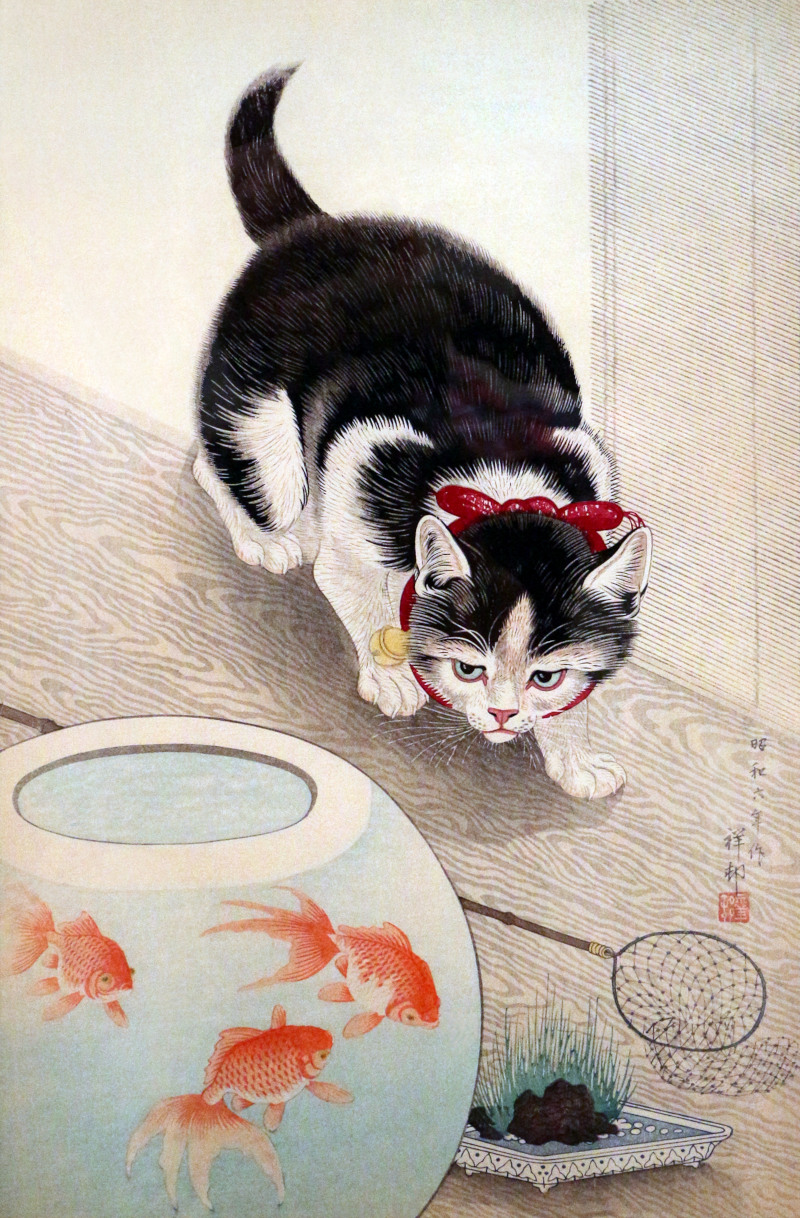 Ohara Koson's Cat and Goldfish Bowl
Ohara Koson's Cat and Goldfish Bowl
Abstract Fish by Paul Klee
Paul Klee embraced many different artistic styles within his work and within this abstract piece he develops a fairly primitive look with simple arrangements of lines, and no desire to accurately replicate the fish. It was during the mid 20th century that artists were starting to use fish in a more expressive manner, and moving on from the obsession with accuracy which was found in the 18th and 19th century.
Angel Fish by James Carter Beard
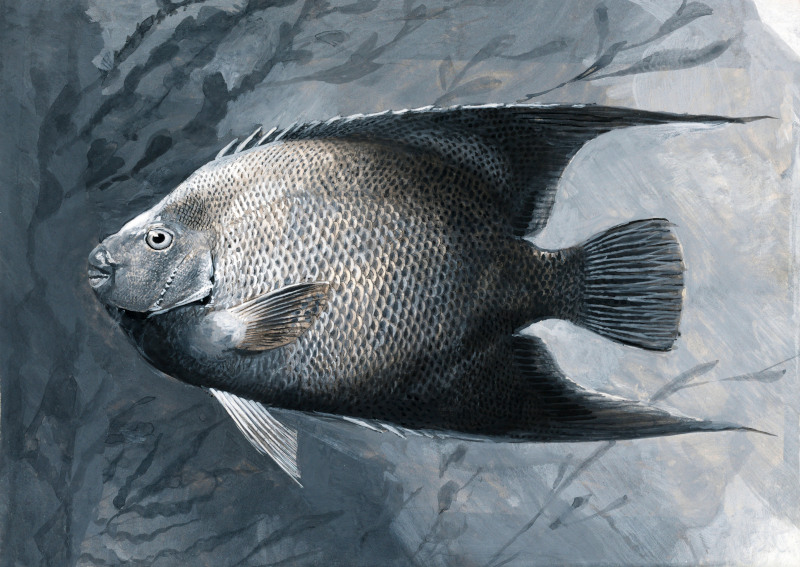 Angel Fish by James Carter Beard
Angel Fish by James Carter Beard
Illustration by Utagawa Hiroshige
 Illustration by Utagawa Hiroshige
Illustration by Utagawa Hiroshige
Carp Swimming up a Waterfall by Yashima Gakutei
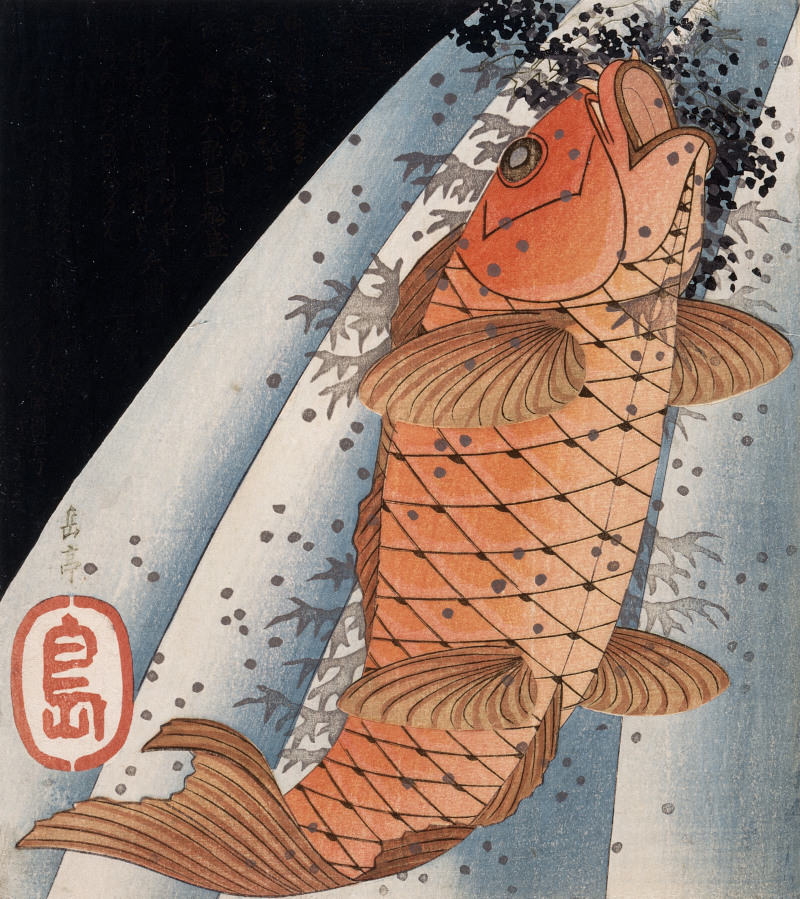 Carp Swimming up a Waterfall by Yashima Gakutei
Carp Swimming up a Waterfall by Yashima Gakutei
Great Barrier Reef Fishes from The Great Barrier Reef of Australia by William Saville-Kent
This incredible display lines up a number of brightly colored fish together in an effort to display the beauty of fish found within the area of The Great Barrier Reef of Australia. In doing so, art such as this can help to strengthen efforts to preserve what is there, though that challenge is constant, and continues to be fought today.
 Great Barrier Reef Fishes from The Great Barrier Reef of Australia by William Saville-Kent
Great Barrier Reef Fishes from The Great Barrier Reef of Australia by William Saville-Kent
Colorful and surreal illustrations of fishfound Indonesia and the East Indies by Louis Renard
This series of fish drawings serves as a delightful artwork, with color and interest, but also can help to educate us about a number of species which are listed within the work itself. Some of the patterns are extraordinary, and feel particularly unusual, and this work would have been part of a wider series aimed at drawing attention to the specific fish found within this region around modern-day Indonesia.
 Colorful and surreal illustrations of fishfound Indonesia and the East Indies by Louis Renard
Colorful and surreal illustrations of fishfound Indonesia and the East Indies by Louis Renard
Ukiyo-e Illustration of Fish and Clams by Mochizuki Gyokusen
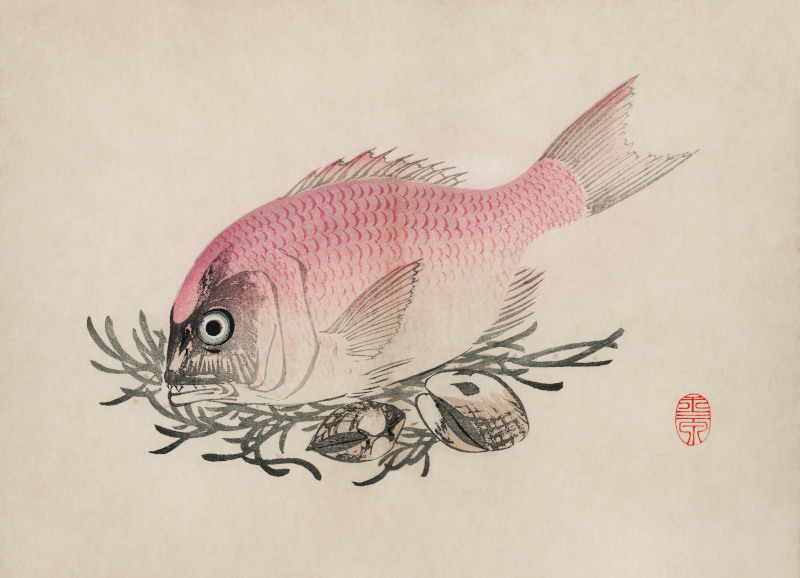 Ukiyo-e Illustration of Fish and Clams by Mochizuki Gyokusen
Ukiyo-e Illustration of Fish and Clams by Mochizuki Gyokusen
Still Life with Fish by Mikulas Galanda
This work by Mikulas Galanda perfectly captures early 20th century abstract art, and captures a fish using just a few lines. He relies on our existing knowledge of fish, which allows our mind to fill in the blanks of detail delivered using negative space and reduced detail. Klee would do similar within his career, too, and several examples of that can be found elsewhere in this article.
 Still Life with Fish by Mikulas Galanda
Still Life with Fish by Mikulas Galanda
The Beauty of Fish Art: A Dive into the World of Underwater Creativity
Fish bring many unique aspects for artists to make use of, and also vary considerably between their different species. There is also a gracefulness within movement of sea creatures, and a tranquility within the depths of the ocean. Additionally, it is not an environment with which humans spend much time within, and so there is a curiosity within fish art.
Fish have provided food to many civilizations, and so their importance would not be underestimated. This maybe the reason for why fish have often symbolised luck and prosperity within a number of cultures, perhaps representing access to water routes which can also bring trade, and therefore financial success. In more recent times, it is the specific beauty of this creature that people have focused upon, helping us to improve conservation methods to ensure these same species continue for years to come.
The curved figures of fish has also been highly adaptable within art, and proven suitable for paintings, drawings, sculptures, and also at motifs, forms of a visual language that can be used in all manner of other artistic mediums, such as furniture design and architectural design flourishes. Such ideas are also commonly found around coastal towns, where fish images can represent the entire lifestyle of the community.
Capturing Movement: Depicting the Graceful Motion of Fish in Drawings
The observation of fish is critical in learning and depicting movement within art. Those able to access species in their natural habitats will always have a more accurate understanding of what they are painting or drawing, and this should translate into better art. Often a fast movement of the pencil or brush can help to create the illusion of movement within art, with what is known as gesture sketching.
Flowing lines are also important in making a static artwork come alive with perceived movement, whilst the way in which the surrounding water is covered can also add a feeling of movement. Light can be reflected across waves to indicate movement, to varying degrees, such as a slowly moving fish, to an aggressive shake or roll, when under threat.
Exploring the Art of Gyotaku: The Ancient Japanese Fish Printing Technique
Gyotaku was an unusual form of fish art, in which the surface of a fish was used to create a rubbing, in a similar manner to the western ideas around bronze rubbing. This process produced interesting art prints, but was mainly used as a means to recording new catches, as evidence and also to record the types and sizes of fish acquired by the fishermen of the 18th century. The term Gyotaku essentially translates as fish-rubbing, which perfectly summarises the technique involved.
Artists would make use of tools such as brushes, rice paper, sumi ink, and watercolors in order to produce these prints, and in recent times there has been a resurgence of interest across the world in this unusual method of art which was entirely unique to Japan at that time. One of its advantages is in how every print would be entirely unique, and also connect with the experiences of the fishmerman as a sort of visual diary of his working life.
Fish as Symbols in Art: Understanding the Cultural and Spiritual Significance
Fish have held a variety of different meanings across a number of cultures, dating back centuries. For example, within Christianity the symbol of a fish can represent faith itself, as well as renewal, and Christ's disciples. In other ancient civilizations it has also been used to represent good fortune and prosperity, in a similar manner to a good harvest.
The yin-yang fish motif found in Chinese art can refer to how competing forces can bring balance and is an instantly recognisable image right across the world today. Some consider the two sides to represent the koi fish, swimming together and some images of the Yin Yang adapt it to appear more related to fish.
Some indigenous cultures have used symbols of fish within their ceremonies, whilst in contemporary art we are starting to see fish used for political commentary around the status of the wider global environment, as our seas start to suffer from a number of issues.
Beyond the Canvas: Incorporating Mixed Media into Fish Art
Artists living close to the sea will regularly use mixed media to capture the essence of their communities, and fish will often feature within that. Many options exist, but clearly elements of fish themselves would not last long and so alternatives have been sought. Linking with Japanese art, is the idea of creating replications of fish scales by rubbing them, and creating prints from that. Elements from the shore can be used, such as pebbles, to help create the atmosphere of the seaside. Sand and seashells can also be used in this manner.
Drawing and Painting Tropical Fish: A Colorful Journey into Exotic Seas
Exotic fish offer many unique opportunities to artists. They regularly have bright and brilliant colors which can produce beautiful artworks, and are normally best represented through oil painting. They also use different patterns and colors for different reasons, including the ability to camouflage by replicating the environment around them. One may also come across large groups of multiple patterns and colors which provides a feast for the eyes and an almost endless visual treat which is easy for artists to harness within their own work.
Contemporary Fish Art: Pushing Boundaries and Redefining Traditions
Having risen to incredible levels of accuracy in the 18th and 19th century, fish art of the 20th century would start to become more expressive and experimental. Fish would now be used in surrealist scenarios, such as riding bicycles and other bizarre combinations. There has also been a considerable rise in art and activism being combined together, and artists have used fish to speak out on environmental issues, particularly when related to marine life and its conservation. Issues around polluted seas has also connected well with using fish within poster campaigns and leaflets.
Another interesting development is in kinetic art, where sculpture artists have produced continual movement within their work, often within outdoors installations. This movement has also helped to attract and interest children or those not normally interested in sculpture and messages can then be delivered once this connection has been achieved. The future of fish art seems to centre around digital art, and the opportunities that it brings with regards sharing and collaborating together across different geographical regions, as well as sketching on tablets and slowly building up imagery over time.
Preserving Nature's Beauty: How Fish Art Can Advocate for Marine Conservation
Fish art has a great importance within marine conservation. Artists can remind us all of the beauty of these creatures, and depict them within their natural habitat in order to better connect us with an environment which is not as accessible as with land-based animals. Imagery can be used to create impact with activist advertising and posters, and also help to get children interested in the same causes.
Additionally, a variety of art can remind us of the different species found living in the sea, and also as to types of fish that have died out for various reasons. Efforts can then centre of protecting existing fish to avoid the same thing happening to them in the future. Many urban dwellers are familiar with fish only through their diet, and art can help to bring these creatures to life.
Understanding Fish Anatomy: A Foundation for Realistic Fish Drawings
The observation and understanding of the fish anatomy is critical in achieving a high level of accuracy within fish drawings and paintings. One must grasp the differences between bony fish and cartilaginous fish, as well as closely observing their skin, scales, skeleton and facial features. There is a near infinite combination of features to find here, and each fish can add something quite different to an artwork. Many of the choices will be geographically based, with artists making use of species local to themselves.
Creative artists have been able to adapt fish facial expressions to bring life and personality to their subjects, but would need to understand the intricate relationship between its eyes, mouths, and gills before accurately amending them to create something believable.
Minimalist Fish Art: Using Simplified Techniques for Expressive Fish Illustrations
Minimalist art has built up a strong momentum over the past few decades and fish have proven a popular choice for some. The understanding of several techniques is necessary in order to effectively work in this style, including the use of negative space, as well as how we make use of people's existing knowledge of creatures, allowing them to fill in any blanks that we leave within a work.
First, it is necessary to examine fish in detail and to understand how their component parts fit together, at which point we are then able to start to reduce fishes down into just a few elements. These can then be reduced to single, well planned lines, before additional strokes of the pencil or ink pen can deliver the suggestion of movement. Our familiarity with fish makes minimalism more effective, but the lack of accuracy makes it hard to differentiate between different species in most cases, which is where the detailed, scientific approach is far better suited.



